What an incredible time here. Flew in with a good friend (Ike) and we worked on a farm for a few days, and then spent today seeing the city itself. I got connected to the farm we stayed at through an organization called WWOOF. The way WWOOF works is you spend part-time working on the farm, and then the remainder of the day is free for you to do whatever. Room/board and food is also generally provided as part of doing the work. Some WWOOFers spend several months, some spend a week, or even a day. We spent a total of four and a half days in Oregon, and three of which were on the farm (the fourth day we stayed in Portland). We slept in a trailer that was on the farm (bringing a sleeping bag turned out to be key!)
Even though it was such a short time (and scratching only the very tip of what working on a farm is like), I had such an amazing time and thought to share the experience as you might be interested in ways you can connect to agriculture/farming, or find the different perspectives it can bring cool. Oh, and I'm sharing parts to the experience in no particular order.
Ah and last thing--this is pretty darn long. Some photos of scenery at the end. :)
Chainsaws and Excel
Using a chainsaw is not like using excel.
One of the days we spent a few hours cutting and collecting wood/logs from a deeply wooded area of the farm. I got assigned the chainsaw job, about 100 yards farther out from the rest of the crew in my own area--there were trees that were previously felled, and my job was to saw off the branches, leaving long clean logs.
Long story short, it was a ton of fun. I loved it.
There are at least two things that make chainsaw work so radically different from office work. The first thing, perhaps quite obviously, is the exhilaration of it all--it's a lot of fun. There's the novelty factor of revving up a chainsaw, getting into a firm-footed position, pulling on the trigger as you slice through a real thick piece of wood, with dust/chips flying all over, and the piece of wood falling to the ground (or into the snow in this case). It's also a rather dangerous piece of equipment, so there's that quick 'thrill' of learning how to use it for the first time. (And the novelty here would likely soon wear off.)
But there's this second aspect--your sensory experiences are so fully engaged in the work. There's of course the visual aspect, and you get that via excel. But what you don't get in office-type work is the incredible tactile/auditory/olfactory/and heck even taste (you can basically taste the sawdust in the air). And it's not just like this sensory stuff is a byproduct--it's critical to doing the job properly/safely. (That said, chainsaw or excel, can be approached engaging the senses mindfully.) At one point I noticed a slight clicking of sorts in the chain. I stopped, and checked it out to see if it might be dirt or something caught. But nothing was there. I continued a bit, but something didn't seem right. Then the chainsaw just died on me. I restarted it, but it died again. And well, what do you know--it turns out it ran out of fuel. Smell is of course important cue for potential issues in this kind of stuff as well.
If you are working on excel and you smell something burning--no matter what kind of heavy formulas you got running the issue probably isn't your computer. The visual sensory info of numbers and formulas on the screen contains the main feedback.
And well, I can see why fidget spinners, music/podcasts, etc help with office work--there's so little sensory stimulation in the ordinary office day. Imagine if every time you did something in excel, something smelled slightly differently, sounded differently, and heard something differently--but in trying to think of some sort of artificial solution (like noises based on whether if a formula worked or not, and the complexity of it, etc) wouldn't have the variability in nature and just seems too forced.
Office-type work can offer other things. I enjoy the puzzles that can come with a good challenge at the office, whether through excel or otherwise. And in some ways using a chainsaw doesn't have that. But it can be. There's a system for how to efficiently cut this stuff, and I only got a glimpse of it. There are problems to be solved. At what distance from tree branch to branch is it efficient to hold onto the blade trigger? Given an angle of a branch at what blade angle will produce the smoothest cut--balanced with the safety of the blade angle against your body? How does the wetness of the wood affect things? What chain saws are optimal for which scenarios? And so on. And those are questions that are going to change from tree to tree too.
Conveyor Belting Logs
After cutting down the branches and all, we drove via tractor/Gator (a Gator is an all-purpose utility vehicle used for farm stuff) back to the main farm/house area, where they were splitting the logs to store in the cellar. Ok, so this was a pretty epic setup, lemme try to describe it.
We had logs, and then this wood splitting machine that would cut the big logs in half. Then our host farmer (I liked to call him "Coach") had a conveyor belt on the outside to his house, where at the end of the conveyor belt was a small window (elevated door) into his cellar. So essentially, when the conveyor belt is turned on, you can put the split wood or logs on the belt and it goes on the belt and through the window of the cellar, and falls about 5 feet to the basement floor. So if he has heavy stuff to put in his cellar, he can just take it to the outside and through his trap window drop it into the basement. (Basement=cellar.)
How did he operate the conveyor belt? Pretty cool--with his John Deere tractor. It was nifty, basically the conveyor belt ran through a connection to a long shaft which was spun by a connection to the tractor. Of all the things we did, Coach cautioned us that this was the most dangerous--if we got close to this rotating open shaft we could easily get our clothes caught in it, spun around, smashed, and killed.
Now we got the logs on the conveyor belt going into the basement, and my job here was in the cellar--taking the logs as they dropped into the basement and stacking them up.
But, here's the thing. What was obvious as this started--we have really heavy objects coming off a conveyor belt, and they don't quite just fall nicely. Some of them depending on the weight/how they were placed could shoot out a couple of feet before falling.
Logs would come off the belt every few seconds, often it was two big pieces about a couple seconds apart, followed by a few seconds pause (while they were splitting the wood outside) and then another two pieces would come. But the timing wasn't precise, and if I got in the way while a log was oncoming, well yea, I'd probably get knocked out in the head.
And because of the noise outside of the tractor and machine, and the higher placement of the window--it wasn't easy for them to see/hear me, and I couldn't easily see/hear them. It occurred to me a few times if I was knocked down by a log, I could easily die because a second later I'd have the rest of the logs fall on me. And they likely wouldn't realize until it's too late. (After it, I found out Coach had been asking Ike to periodically check through the window to see if 'my head was still 'bobbing around in there' :D)
There were also a lot of logs that would fall/bounce on the concrete floor, and so I had to make sure my toes wouldn't be crushed on any log bounce/rolls.
This is also what made it so much fun--to keep up to their pace I had to figure out a system to stack the logs while the logs were falling/shooting out. To ensure I wouldn't get hit, I'd need to know the timing of the rest of the crew's work. I figured it out based on the pattern of their wood split work, combined with occasional glances where I'd peer through the window to estimate their log splitting cadence.
Sometimes I'd fall behind--as in, a lot of logs would come off the conveyor quickly, and I couldn't go near the window (or else I'd be hit by the logs) and the logs would then pile up as I would wait before a natural few-second pause in their work to approach the growing log piled at the base of the window. I'd then dart over and toss as many of the logs I could away from the window/wall base towards a clear place in the cellar where I could stack the logs in a safe zone without worrying about falling logs.
The most rewarding part of all of this was when I was able to catch up to the pace of their wood splitting, and I managed to stack up all the logs that had fallen out of the window. I could then stand to the side of the window and try to catch the logs as they were coming off the conveyor. That probably wasn't so smart of an idea--I could drop them on my foot or whatever, and you can't be sure the angle that come off or the weight of them. But when I was able to make a catch it was pretty cool. And icing on the cake was if I was able to catch the log off the conveyor, and then quickly toss the log neatly onto the stacked pile of logs. The few times that happened--wow, the efficiency of it all felt so good. The comparable office-work feeling is like when you figure out a real short and efficient excel formula to do something that you thought could only be done with some real convoluted formula, if at all.
Turns out Coach didn't expect me to keep up. But it was a fun challenge and exhilarating. Worked up a real sweat, which was an amusing contrast to my ice-cold feet.
End result was a nice stack of logs, ready for him to toss into the furnace to heat his home.
Immediacy of Work
We can get into this whole 'go to work to buy a car, buy a car to go to work' cycle. There's something about Coach's work where the labor is so directly connected to one's basic necessities that makes the labor much less remote. (I guess this might sound quasi-marxist, or part of what people have it mind on communes.)
We were prepping and stacking the logs not to sell to make money to use for whatever XYZ purposes, but to put them in his cellar so that he could heat his house. That was the sole purpose of the logs. So that during the winter he could keep warm.
And much of the food picked--was of course if not for the house for others to eat. And any mistakes have a direct impact. So when WWOOFers from last year mistakenly planted twice the amount of spaghetti squash, Coach was left with hundreds of pounds of leftover spaghetti squash (I had for dinner, they were delicious).
That said, it also gave me appreciation for the work I get to do at the office and on the side. Being able to work not just to sustain, but to create and in some small way contribute to adding some value to the world--is such a blessing. That is to say, the ability and opportunity to take one's passion and be compensated for it (even if it doesn't involve cutting down wood to heat your house), is something to be real lucky to have.
Ike said it well, "at the end of the day, if no one bought your onesies you can't eat them". (I work in the childrens clothing space, we make baby onesies :))
Interlude on Footwear
So I didn't bring a jacket or coat (and haven't worn one in a few years now). Being active in the 30 degree weather in a t-shirt wasn't a problem though, the blood was keeping the heat up. There was also barely any wind, which made it feel warmer.
The hands were fine, too--most of the time when we were doing stuff we'd use gloves. (The few times I didn't though--like when I was mixing wet soil--oh boy, hands went straight numb.)
But the feet. Yes, the feet. They felt cold/numb most of the time.
Turns out, bringing your old sneakers that have holes in them wasn't a good idea, because the second I stepped into the snow, the snow would seep in through the rips/holes, leaving me with cold damp feet for the rest of the day. Even standing on dry concrete at the auction house we went to--it felt pretty darn cold.
And even with dry boots, Ike's feet were real cold as well.
A precious moment from the trip was on our last day walking now in the city of Portland with dry feet, Ike made a comment on how it was the first time in a few days we could really feel the ground outside for an extended period of time (as our feet weren't numb).
Moral of the story here--weathering cold for extended periods of time is more than just jacket/etc--proper footwear is key. Real warm boots, with real good socks. And oh how grateful and lucky to live with all the shelter and amenities we do have. Knowing thorughout history how this was not even the tip of the iceberg, not even a drop in the ocean of the kind of tremendous difficulty in the cold other people have weathered.
Hazelnut trees & Cycles
Shifting gears here. One of the fun parts of the trip was driving with Coach, because as we drove he'd point out the various different crops we'd pass along the ways. We saw hazelnut, blueberries, grapes, hops, garlic, and stuff like that. But the thing we saw most throughout the Oregon area were hazelnuts. As Coach explained, there had been some bad disease that wiped out a lot of hazelnut trees a few years back, but through an initiative with a university (might be Oregon State University) they developed a disease-resistant strain of hazelnuts. And between that, and the fact that the climate/nature of the crop works well for the area, and the market demand--farmers have been planting lots of hazelnuts lately.
But Coach doesn't have hazelnut trees. He has mostly an assortment of garden vegetables, tree/forestry stuff, and has some chickens/pigs.
You see, one of the things Coach would tell us--a lot of farmers will try to ride these cycles, but it can be so hard to time and many end up going bankrupt. He spoke about that a bunch of times--giving examples where people would double down on particular hot crops, but then a few years later demand would shift or prices would change and the economics wouldn't work and farmers would lose their shirts.
And well, you could easily find+replace this idea in farming with one on stock picking. Something like Amazon's stock = Hazelnuts, and Vanguard mutual funds = Coach's diversified farm. Except when you make bets in farming, you gotta be in for a much longer haul--it didn't sound like there are easily accesible secondary/tertiary markets to offload risks and assets, things on the farm are generally way less liquid than stocks.
Anyway, I guess a sidenote--but chatting with Coach about farm economic cycles was lots of fun and really enjoyed that aspect of the time there.
100+ Years
Perhaps it's not too surprising a philosophy on farmonomics like that would be part of a family farm that has been around since 1875.
Wait. Yes. 1875. That's right. Coach's farm has been around in Oregon territory since 1875. (That's 16 years after when on February 14, 1859 Oregon was admitted as a state. Though I should double-check that date, if not 1875, 1885.)
Can you imagine? A farm started just after the civil war, and has gone through WWI, the Great Depression, WWII, the consolidation of big corporate farms, the green revolution, biotech, and everything in between. Absolutely astounding.
I barely scratched the surface of Coach's knowledge and couldn't even pretend to know the secret to that kind of longevity. I could imagine the diversified crop approach and his local marketing is a big help. The family dynamic and location of the farm is I'd bet important too.
Also, there's a lot of things that seem to be in parallel with Jack Bogle's and Coach Bill's philosophy on life. Both do their own thing. Putting one step in front of the other. Longevity and strength in their model not through some complicated approach to things, but at the end of the day through simplicity and diversification. Bogle wasn't betting on particular stocks or founded the philosophy on complex algorithmic decision making, and Coach isn't betting on particular crops or basing his approach on high end data tech either. In a way in their mutual-fund/crop type approach, is betting more broadly on the market and economy as a whole. A belief in the trajectory of the economically measured output of the American spirit. Which, if through dedicated hard work, some luck, and given cushion to get through the up/down cycles of the market, marches slowly upwards.
Auctions
On Tuesday it was snowing pretty hard overnight and wasn't the best conditions to go out on the farm, so we went to the local auction Coach often goes to--they have a weekly auction of miscellaneous objects (from books to record players to tractor parts), poultry/small stock auction, and bovine/cow auction. The misc. objects part of the auction was closed from the poor weather, but the livestock stuff was going on. We saw the chicken auction, which was something else.
There's a bunch of cages with things like chickens, pheasants, rabbits, etc. The auctioneer gets up and does his thing (talking real fast like you see in the movies), and a chicken can go for a few dollars or more. After someone gets the bid they'll go up to the cages and just either walk away with the animals in hand, in a box, or bag. Ah, one guy just stuffed his chickens in one big garbage bag of sorts.
Another guy got the winning bid for two pheasants. But as he walked away, carrying one by its ankles and another in a box, he tried to put the second one in the box but the other flew away :D
Coach was running low on chickens (he had a bunch, but several were recently eaten by coyotes), but the chickens they were auctioning off were past their prime laying-egg days.
Secondary and tertiary markets for livestock definitely not something you see in NYC.
There's of course this queasiness seeing the handling of the animals and all, but there's also an equally important perspective you get on the people's livelihoods that are involved. And while it's very important to think and value animal welfare (I've been eating vegan for like 9 years now, and vegetarian for around 12 years--originally for health though), we cannot simply toss aside the people who are involved in the process.
You have mothers and fathers coming in, hoping they can buy some livestock to 'repurpose' and make a few dollars so they can put food on the table. And you know what? I suspect that many of them don't like the animal treatment either. But are in the system to help make ends meet. So while it was hard to see chickens transported in cardboard boxes, what about the mother and daughter carrying the box who might be below the poverty line and cannot easily afford a fancier roomier box? (And not that they need or are looking for sympathy, but understanding from one human to another.)
I totally get the march being made towards things like lab-grown meat and all. Sustainability doesn't only make sense economically, but it makes for a beautiful world. But if a goal is to be more humane to animals, let's not forget about the humans in the process. And whatever humane perspective we are taking to chickens, let's take a ten-fold more humane and empathetic understanding towards actual fellow humans. Let's spend resources on reducing cruelty towards animals, let's spend on animal welfare. But let's spend ten-fold more resources to reduce cruelty towards humans, and towards human welfare. And in the very moments we are trying to alter the agricultural system or whatever it is let's remember the people who are a part of it.
I also came across the below newspaper which was pretty interesting to go through:
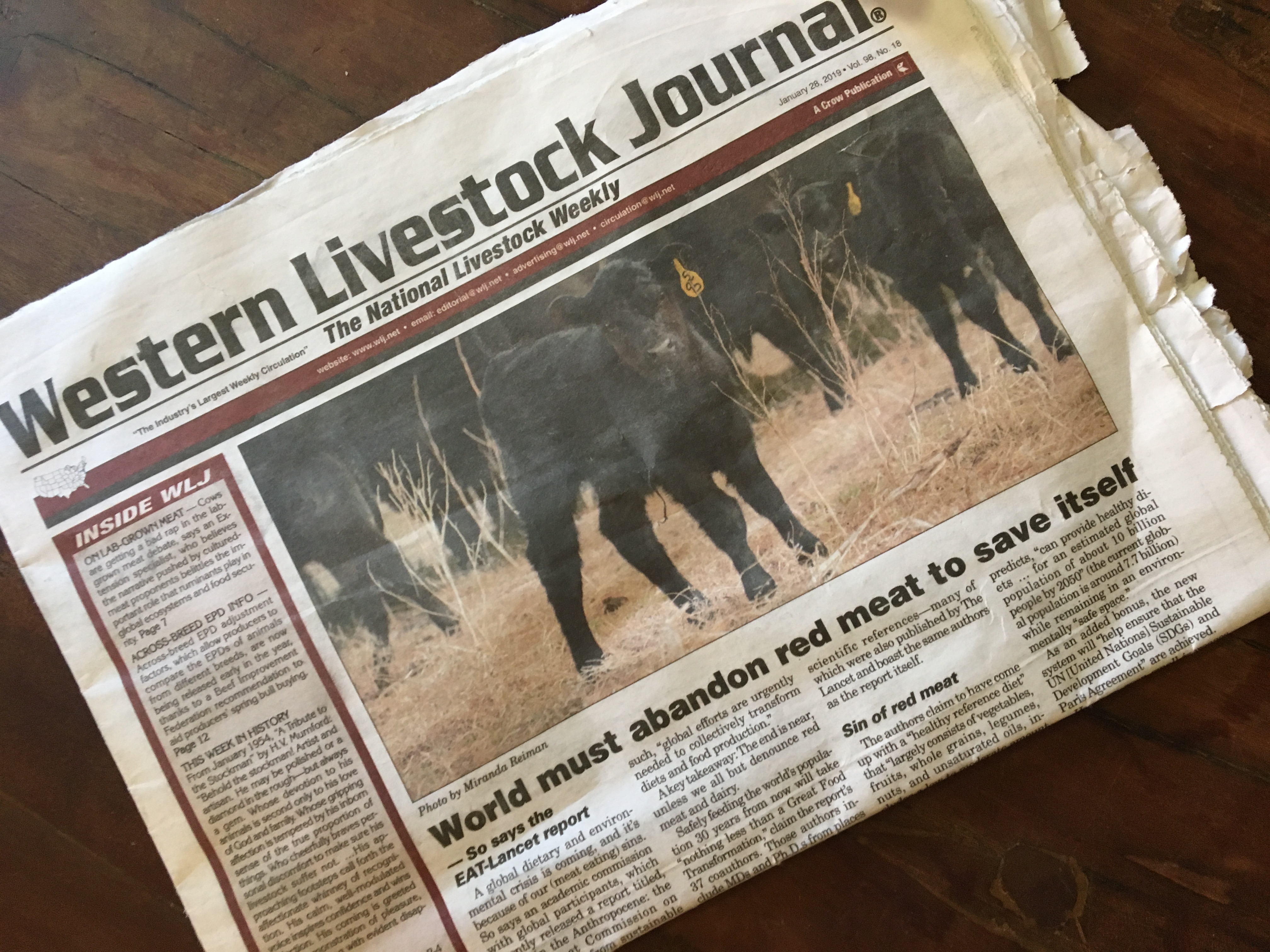
Lost for a Moment
One of the afternoons before Ike and I went out to the nearest downtown city area (about 15-20 min drive), I figured to head out and wander around the farm (it's big, most of it not actively farmed). I found this trail that led out into the forest, walked down through it and just explored for a bit--and wow it was so beautiful, so quiet, I felt like I was wrapped in a blanket of soft white snow and trees. I might've been in a t-shirt, but I felt so warm. I just stood there, in genuine awe, and not even sure what I was in awe of. (Before I left I took the below picture.)
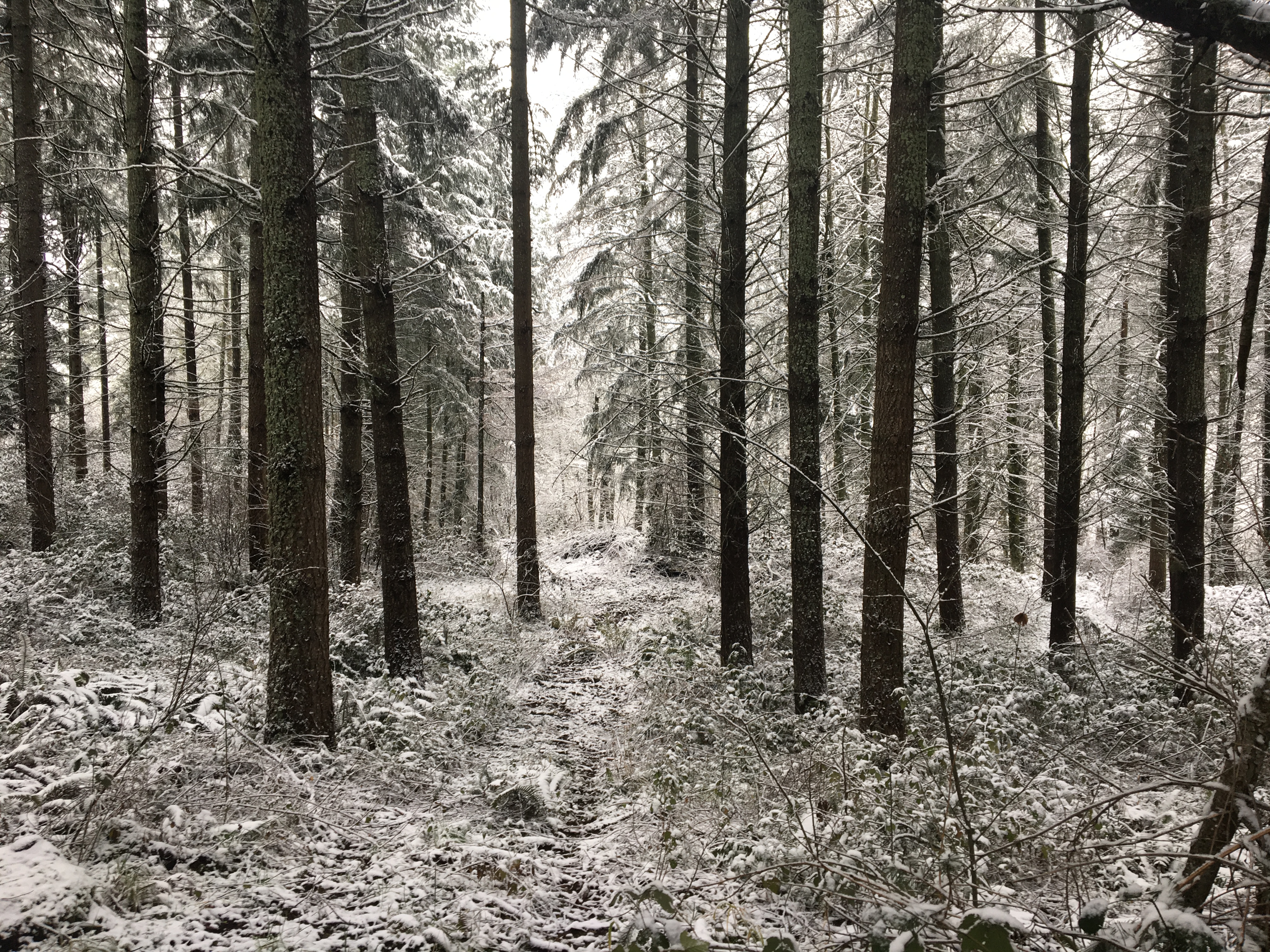
There's something so powerful in a very primitive way. It's like the world stops. I mean, no, the world moves on--but most of the world is actually just this--nature. And being able to be in it, without any distraction. There wasn't anything going on. There was the crackle of my sneakers against the snow. The deep hunter green trees so approachable yet towering and strong. Maybe that is part of it--nature has the projection of such strength. It's hard not to see massive trees like that and not be inspired. But yet, there's also this fragility. Wait, no, not fragility. More like softness. Yes, softness. Trees are strong but even the strongest wither and die. Snow--snow might be cold, it might be icy, but it melts too. Being enveloped in something so incredibly strong yet soft. To look around at nature and feel that strength, yet feel that softness. Nature is vulnerable like us too. And in a way, enveloped in the security and awe of of snow-covered trees is nature loving you back.
Yea that makes sense, nature isn't fragile. It bounces back. It's more like memory foam with a strong bed box underneath. You sink into it, but at the end there is something solid behind it. Memory foam, and nature, don't discriminate. It accepts any shape/color/size just the same. You come as you are, you sink into it, and it holds you secure. Nature as a place you can go to, explore, and just be. You get what you give it.
And well, I then looked up and got out of my trance and realized I didn't actually know where I was anymore or how to get back, lost in nature's blanket. I pulled out my phone but realized Google Maps wouldn't be as helpful--though I could get the general direction from it. But then I realized it was good packed snow and saw my footsteps in it and I was able to retrace it back to the main farm area no problem.
Part of me wishes that I was actually lost though. Like getting lost in some dream. Sinking into the mattress and just not sure how you'll climb out--but not caring how you will because you know for that moment you are at such tranquility.
Whenever I come across literature on mindfulness practices and stuff--I think part of the idea is being able to take moments like that in the forest into our daily lives. There is that forest within us--which I guess sounds cliche. And in some ways it is. But what isn't cliche is that there is something quite powerful in being in the vulnerable arms of strength that's soft. And that something about those particular moments in our lives when we especially feel that we can simply 'be'.
Route 214 + Scenery
Route 214, which led to the Trail of Ten Falls hike we went on, was absolutely beautiful. Here are some shots from Route 214 taken while driving, the falls, the farm in general, and roads/stops along the way:
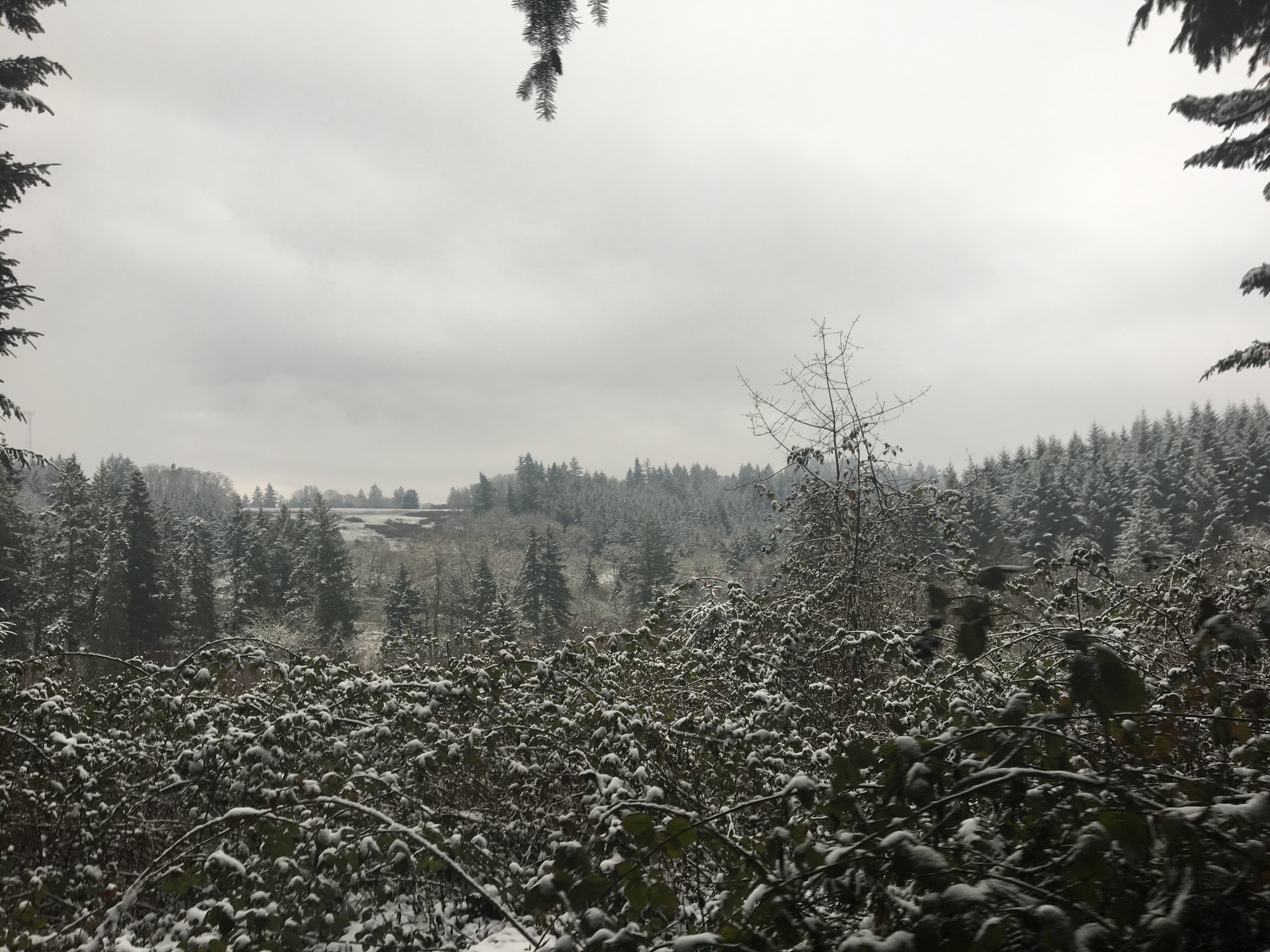
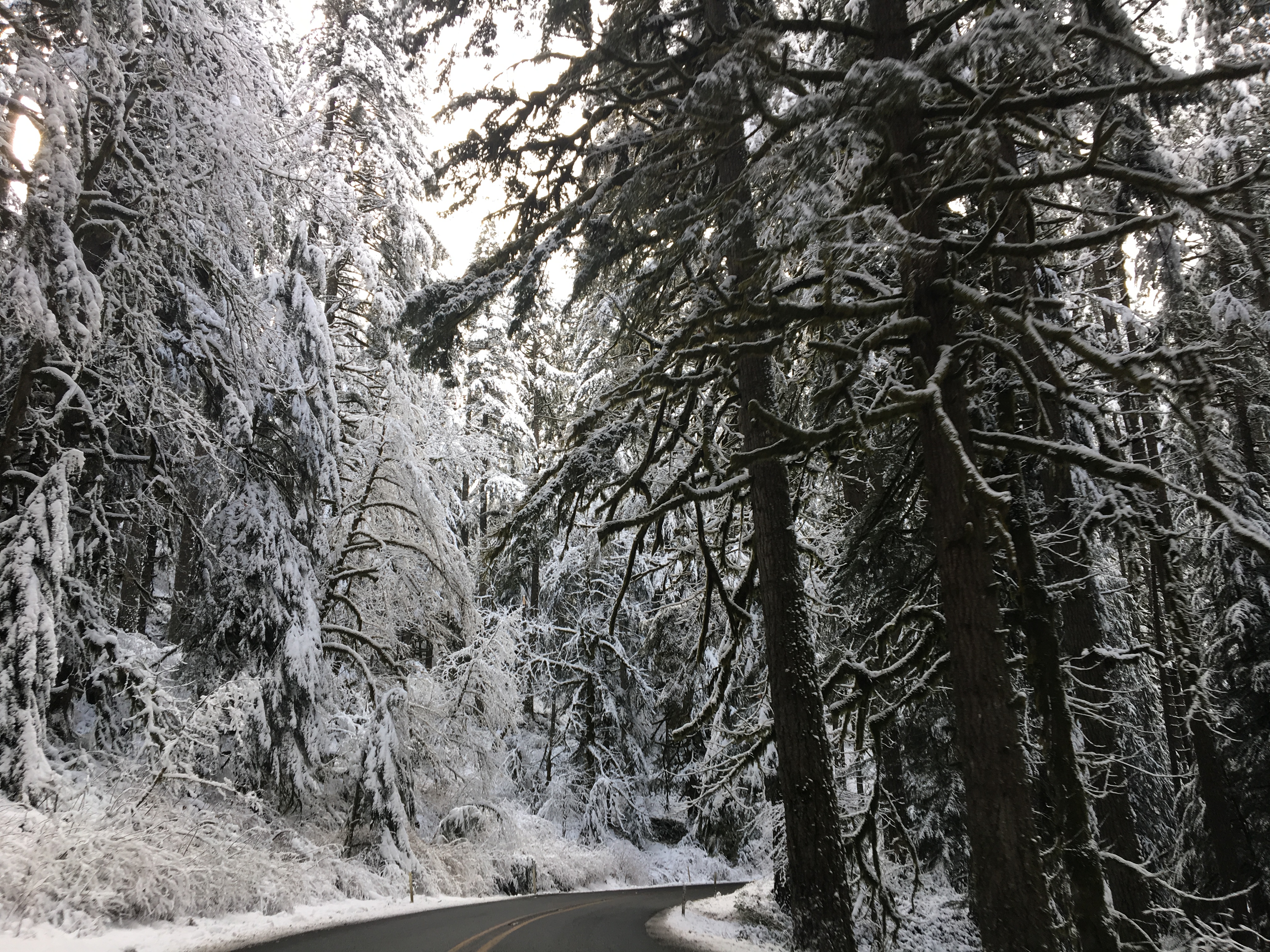
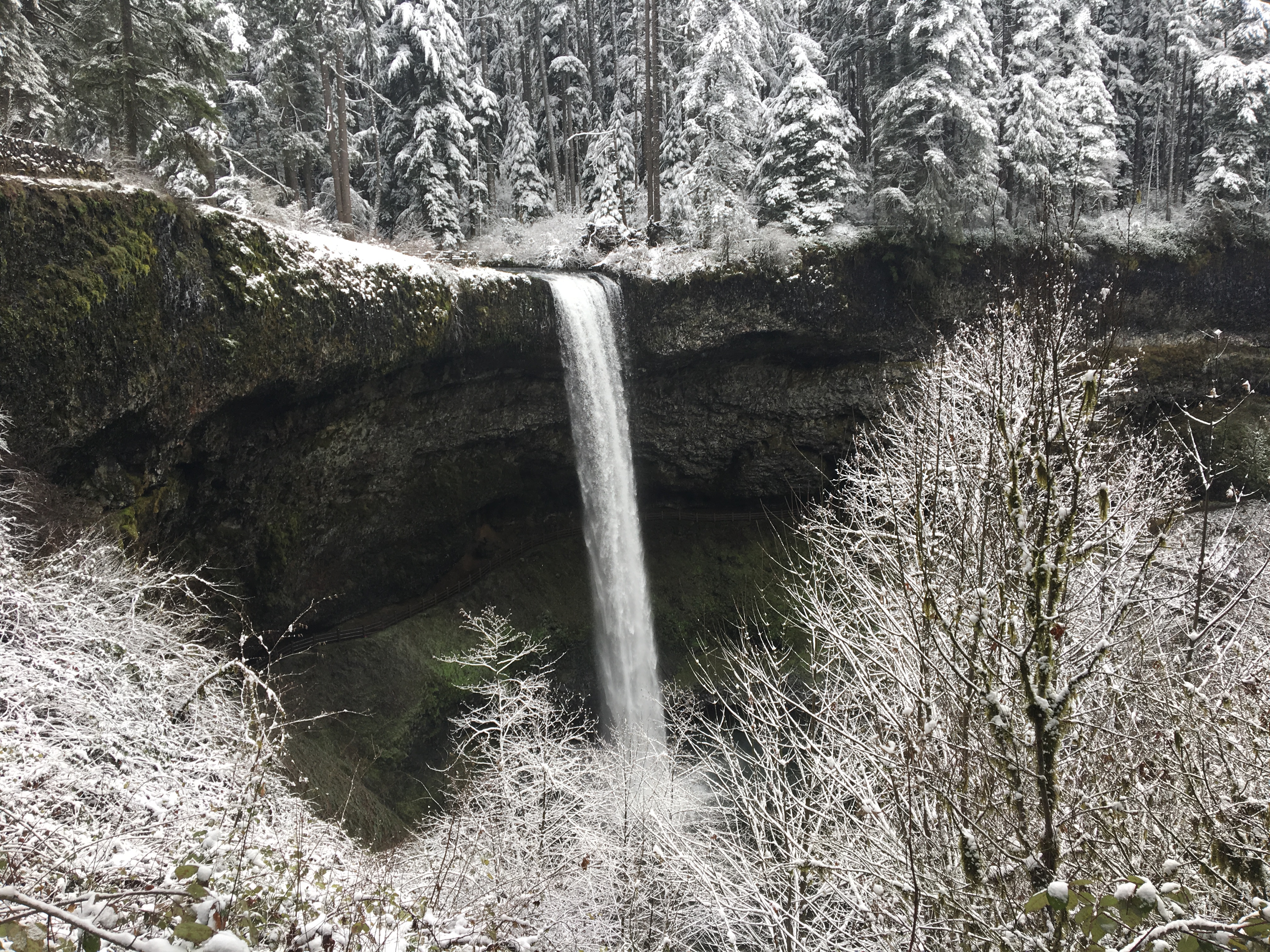
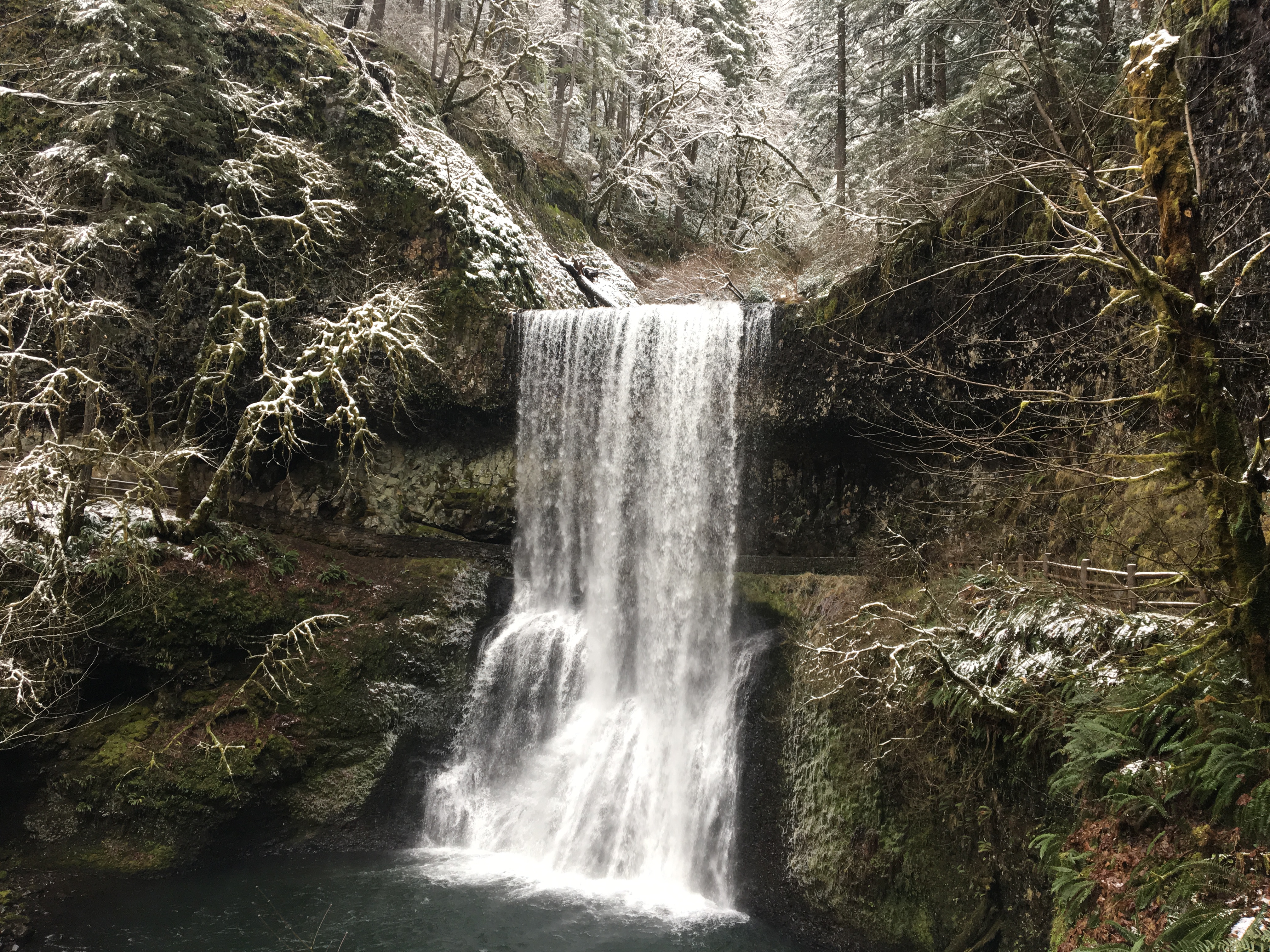
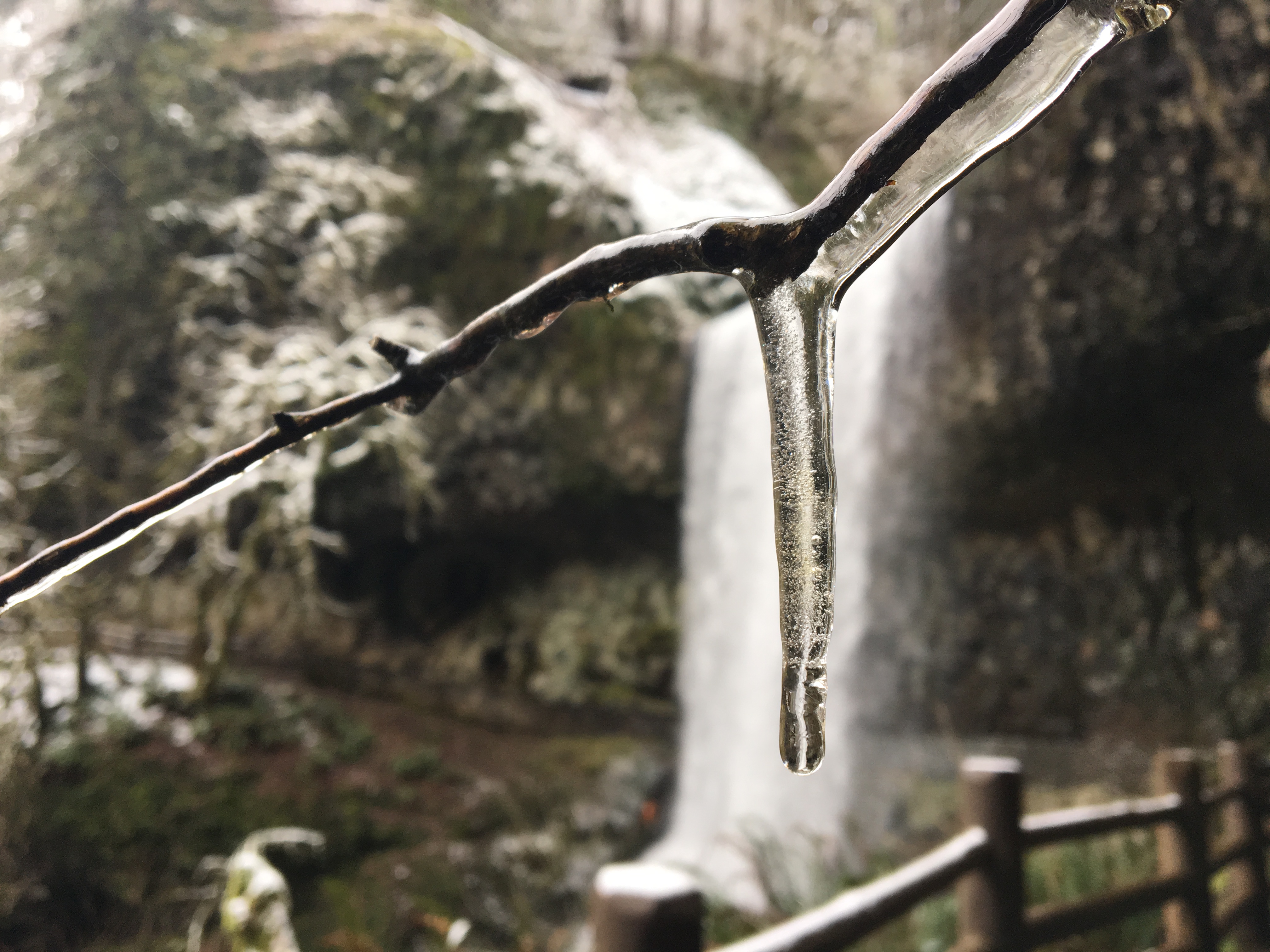
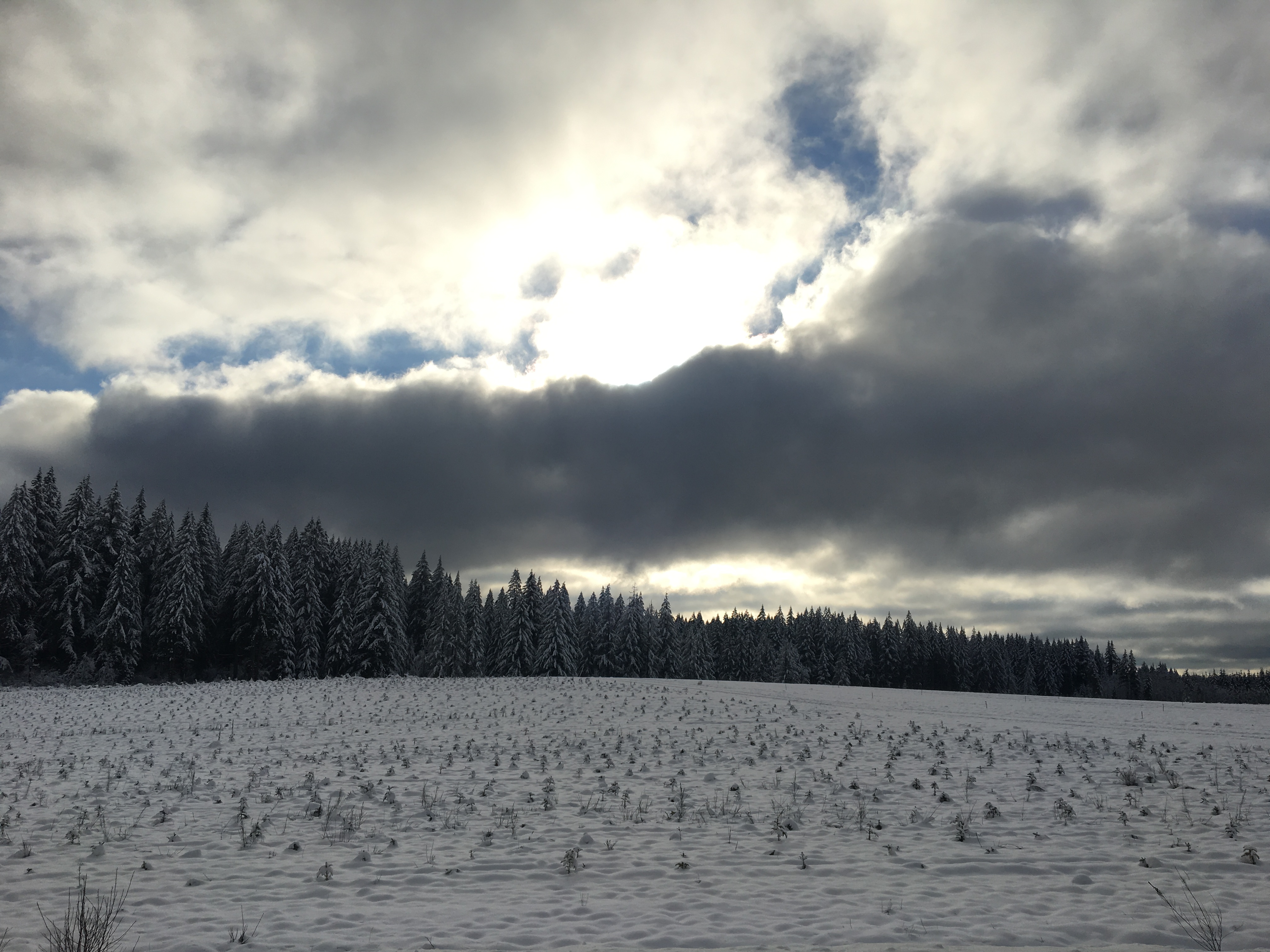
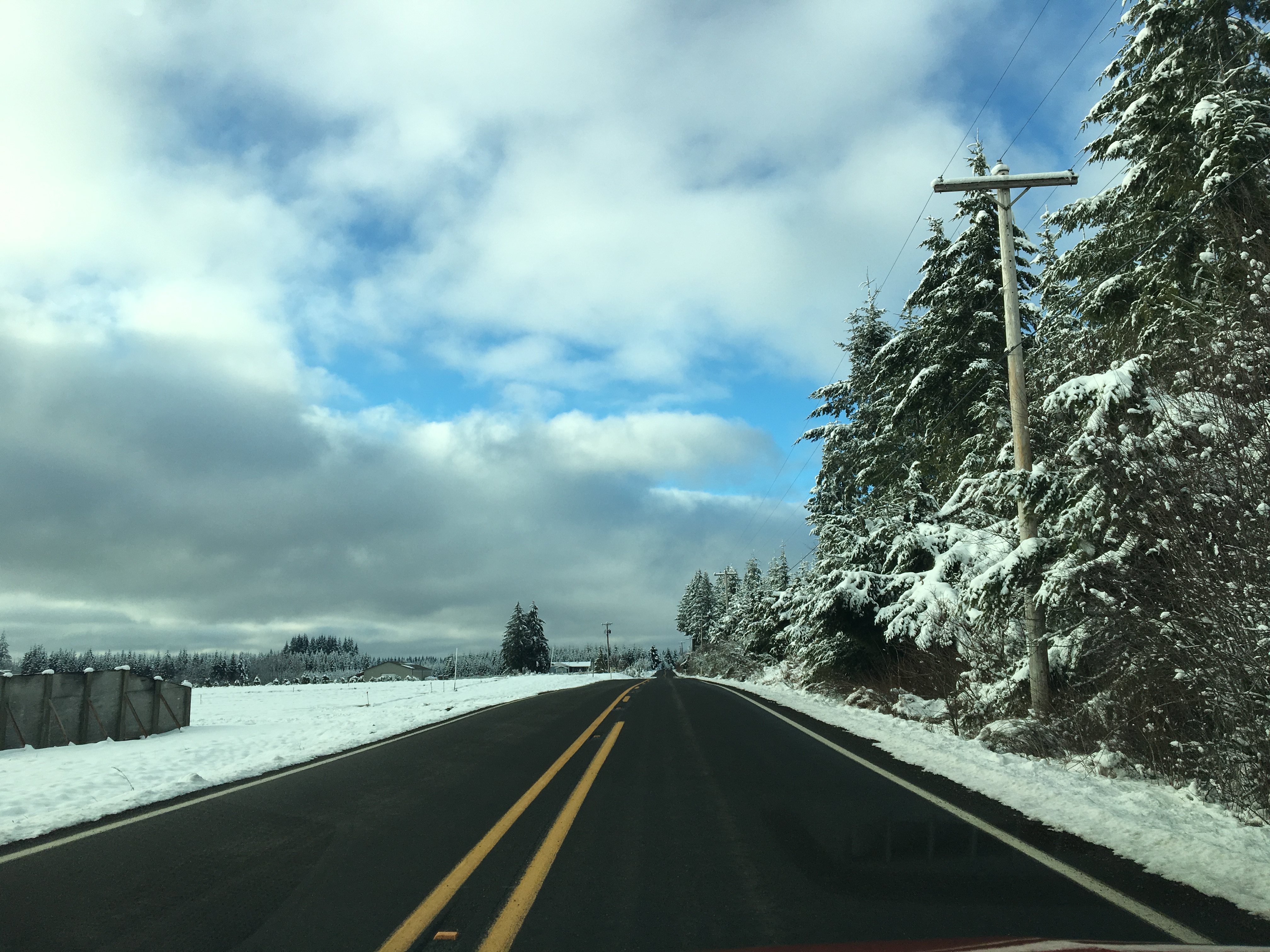

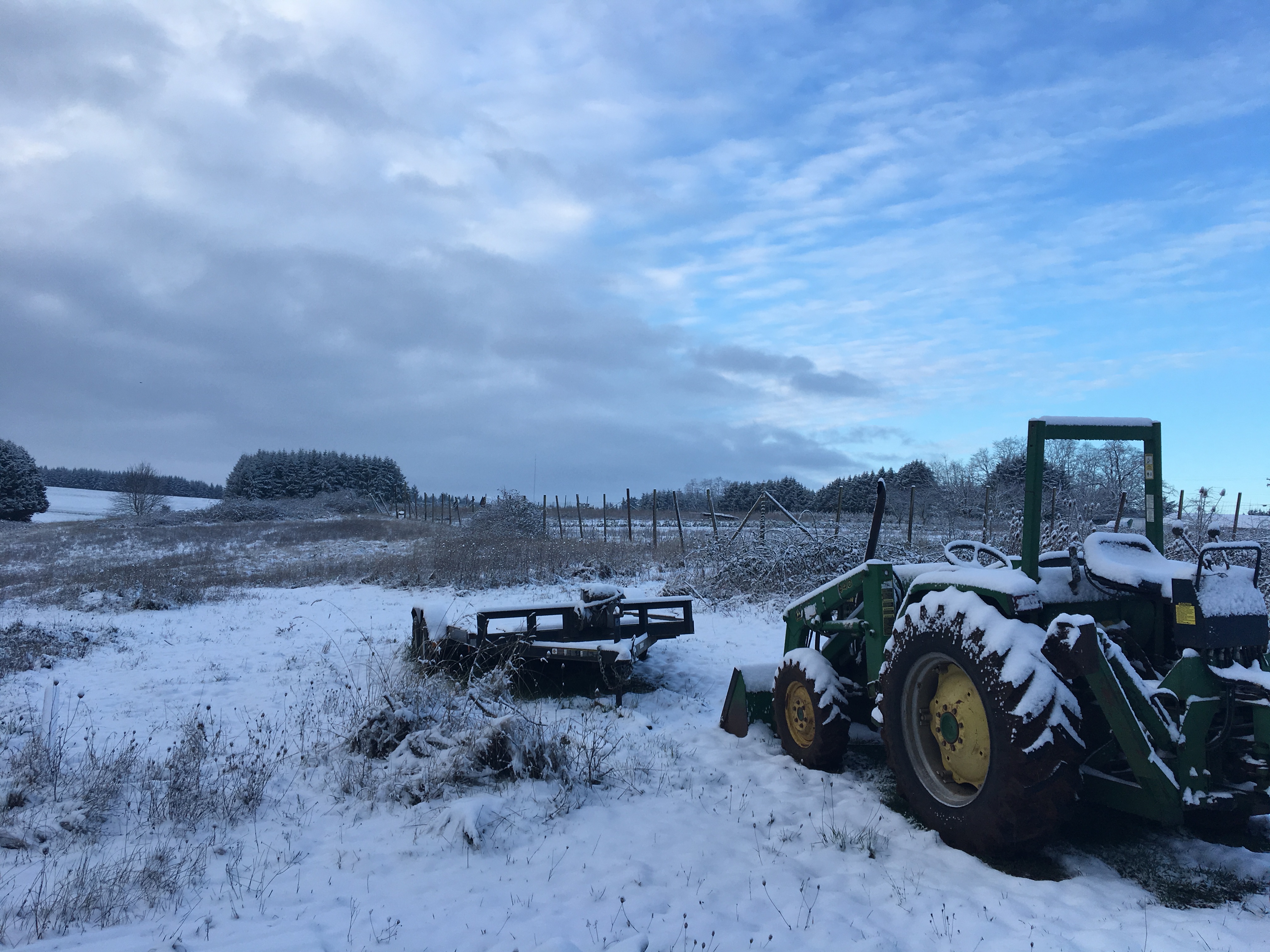

That's all folks! If this sounds remotely intresting, let me know--happy to chat and share more deets (as crazy as it sounds after a long post like this--there are a lot more details on doing something like this.)
Until then, rock it!
Joe
If you enjoy this kind of stuff, click here to stay in the loop.